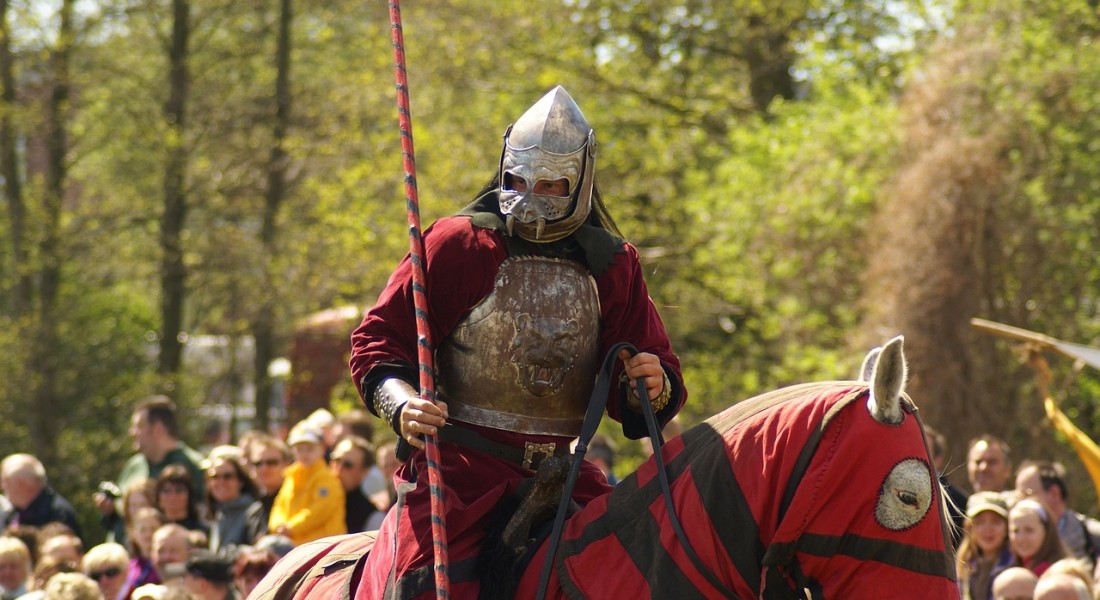Introduction
The medieval era saw the rise of several military orders, but few have left as profound a mark on history as the Knights Hospitaller. Officially known as the Order of Knights of the Hospital of Saint John of Jerusalem, this organization began as a charitable group offering medical aid to pilgrims but later evolved into one of the most formidable military orders of the Crusades. Over centuries, they shaped geopolitics, warfare, and even modern humanitarian work. This blog explores the fascinating journey of the Knights Hospitaller, from their humble beginnings to their lasting legacy.
Origins: The Order of Saint John
The origins of the Knights Hospitaller date back to the 11th century. Before the First Crusade (1096-1099), merchants from Amalfi (Italy) established a hospital in Jerusalem to care for sick and injured Christian pilgrims traveling to the Holy Land.
In 1113, Pope Paschal II formally recognized the hospital as a religious order under the name of The Order of St. John of Jerusalem. Led by Blessed Gerard, the order operated under the principles of charity, care for the poor, and medical assistance. However, as conflict escalated in the Holy Land, the Hospitallers soon took on a military role alongside their medical duties.
The Military Transformation
By the mid-12th century, the Hospitallers had become a fully-fledged military order, much like their counterparts, the Knights Templar. The need for armed protection became evident as Christian-held territories in the Holy Land were constantly threatened by Muslim forces. The order started recruiting knights, building fortresses, and engaging in battles to defend Christian interests.
Some key aspects of their military role included:
- Defending pilgrims and Christian territories in the Levant.
- Constructing massive fortresses, such as Krak des Chevaliers in modern-day Syria, one of the greatest medieval castles.
- Participating in major battles, including those against Saladin, the famous Muslim general who recaptured Jerusalem in 1187.
- Establishing naval forces to combat Muslim fleets in the Mediterranean.
The Fall of the Crusader States and Relocation
After the fall of Acre (1291), the last major Crusader stronghold in the Holy Land, the Hospitallers were forced to relocate. They first moved to Cyprus before establishing their new base on the island of Rhodes in 1310. This marked the beginning of their transformation into a powerful naval force.
From Rhodes, the order:
- Built a strong navy to fight against Ottoman expansion.
- Engaged in piracy and naval warfare against Muslim fleets.
- Fortified the island, turning it into an impenetrable stronghold.
The Knights successfully defended Rhodes against the Ottomans in 1480, but in 1522, Sultan Suleiman the Magnificent launched a massive invasion with over 100,000 troops, forcing the Hospitallers to surrender after a six-month siege.
Malta and the Height of Their Power
After their expulsion from Rhodes, the order was granted the island of Malta by Holy Roman Emperor Charles V in 1530. This marked the beginning of their most famous era, during which they became known as the Knights of Malta.
Their time in Malta was defined by:
- The Great Siege of Malta (1565): The Knights, led by Grand Master Jean Parisot de Valette, defended Malta against a massive Ottoman attack. Despite being heavily outnumbered, the order successfully repelled the siege, cementing their reputation as elite warriors.
- Building the fortified city of Valletta, named after their victorious Grand Master.
- Strengthening their naval power, turning Malta into a key Christian stronghold in the Mediterranean.
- Engaging in continued naval battles against the Ottomans and North African pirates.
Decline and Secularization
As the power of the Ottoman Empire waned, so did the need for military orders. The Knights Hospitaller gradually lost their significance as a military force and shifted towards more administrative and diplomatic roles.
In 1798, their rule in Malta ended when Napoleon Bonaparte captured the island during his Egyptian campaign. The order was forced to leave Malta, leading to a period of decline. The Hospitallers scattered, with many of their members seeking refuge in Russia, Italy, and other European nations.
The Modern Legacy of the Knights Hospitaller
Despite their decline as a military order, the Knights Hospitaller survived and adapted to the changing world. Today, their legacy continues through several organizations, including:
- The Sovereign Military Order of Malta (SMOM): A Catholic humanitarian organization based in Rome, recognized as a sovereign entity with diplomatic status. It focuses on medical aid, disaster relief, and humanitarian work worldwide.
- The Venerable Order of St. John: A Protestant branch involved in charitable activities, particularly St. John Ambulance, which provides first aid services globally.
- Other Orders of St. John: Various European organizations continue the tradition of service and charity inspired by the original order.
Conclusion
The Knights Hospitaller began as a humble group of caretakers and evolved into one of the most powerful military orders of the medieval era. Their journey from Jerusalem to Rhodes to Malta was marked by heroism, resilience, and a commitment to both faith and warfare. Though their role in battle faded, their legacy lives on in modern humanitarian efforts.
The story of the Knights Hospitaller is a testament to the adaptability and endurance of an organization that has existed for nearly a thousand years. Their influence continues today, proving that their original mission—to protect and care for those in need—remains as relevant as ever.



